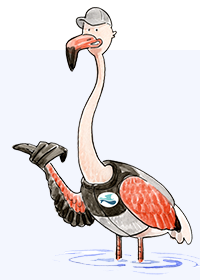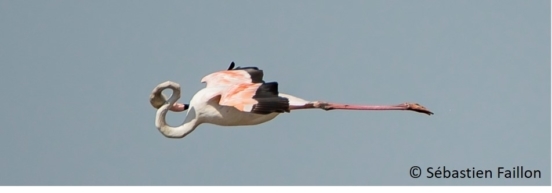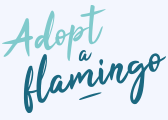|
Greater Flamingo news from around the Mediterranean ͏ ͏ ͏ ͏ ͏ ͏ ͏ ͏ ͏ ͏ ͏ ͏ ͏ ͏ ͏ ͏ ͏ ͏ ͏ ͏ ͏ ͏ ͏ ͏ ͏ ͏ ͏ ͏ ͏ ͏ ͏ ͏ ͏ ͏ ͏ ͏ ͏ ͏ ͏ ͏ ͏ ͏ ͏ ͏ ͏ ͏ ͏ ͏ ͏ ͏ ͏ ͏ ͏ ͏ ͏ ͏ ͏ ͏ ͏ ͏ ͏ ͏ ͏ ͏ ͏ ͏ ͏ ͏ ͏ ͏ ͏ ͏ ͏ ͏ ͏ ͏ ͏ ͏ ͏ ͏ ͏ ͏ ͏ ͏ ͏ ͏ ͏ ͏ ͏ ͏ ͏ ͏ ͏ ͏ ͏ ͏ ͏ ͏ ͏ ͏ ͏ ͏ ͏ ͏ ͏ ͏ ͏ ͏ ͏ ͏ ͏ ͏ ͏ ͏ ͏ ͏ ͏ ͏ ͏ ͏ ͏ ͏ ͏ ͏ ͏ ͏ ͏ ͏ ͏ ͏ ͏ ͏ ͏ ͏ ͏ ͏ ͏ ͏ ͏ ͏ ͏ ͏ ͏ ͏ ͏ ͏ ͏ ͏ ͏ ͏ ͏ ͏ ͏ ͏ ͏ ͏ ͏ ͏ ͏ ͏ ͏ ͏ ͏ ͏ ͏ ͏ ͏ ͏ ͏ ͏ ͏ ͏ ͏ ͏ ͏ ͏ ͏ ͏ ͏ ͏ ͏ ͏ ͏ ͏ ͏ ͏ ͏ ͏ ͏ ͏ ͏ ͏ ͏ ͏ ͏ ͏ ͏ ͏ ͏ ͏ ͏ ͏ ͏ ͏ ͏ ͏ ͏ ͏ ͏ ͏ ͏ ͏ ͏ ͏ ͏ ͏ ͏ ͏ ͏ ͏ ͏ ͏ ͏ ͏ ͏ ͏ ͏ ͏ ͏ ͏ ͏ ͏ ͏ ͏ ͏ ͏ ͏ ͏ ͏ ͏ ͏ ͏ ͏ ͏ ͏ ͏ ͏ ͏ ͏
If this message is displayed incorrectly, you can consult the online version. |
|
| |
Hello, Do you know what I’m doing? - I'm playing hide and seek; - scratching a mosquito bite; - making sure I'm not being followed... If you have any other ideas, send them to us at [email protected], we'll be happy to share your suggestions in a future Gazette! And while we're waiting to unravel this mystery, here's our latest Gazette, with lots of news from your favourite flamingos. Happy reading! Flamingoly yours |
|
|
|
| |
What are the flamingos up to right now?
|
|
|
|
| |
Immediate take off
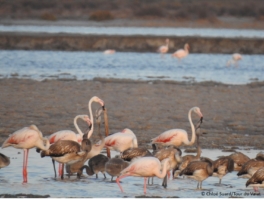 | |
What had to happen... happened 😍! 5,500 chicks were born this summer in the Camargue. As you can see in this picture, their parents have been feeding them ever since. At the beginning of August, the first chicks left their nests. Since then, the others have followed. Will they head off to discover the world or just another Camargue lagoon? We can't wait to see!
|
|
|
|
|
| |
Gimme your science!
How does a flamingo chick eat?
When fed by a parent, a chick receives a substance rich in proteins, lipids, and glucose from the adult’s oesophagus. Feeding time varies from a few minutes to nearly an hour and increases with the age of the chicks. The frequency of feeding decreases with the age of the chicks. In the last weeks before chicks fledge, the parents only come to feed them once every three or four days, interrupting what are really physiological fasting periods. The chicks usually fledge at 80 days old.
|
|
|
|
| |
Connected flAmingos in France
| |
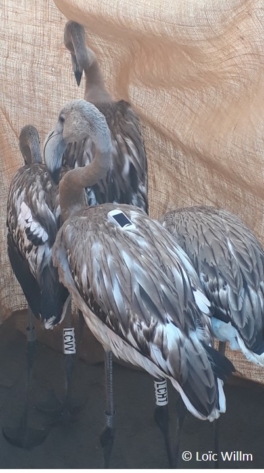 |
For the past two years, the team in charge of monitoring Greater Flamingos at the Tour du Valat has been placing GPS tags on certain flamingos in order to acquire precise knowledge concerning their flight paths. This summer, although a large-scale ringing operation could not be competed, our "flamingo" team fitted 11 flamingos with GPS tags within the MIGRALION project. MIGRALION's mission is to acquire as much data and knowledge as possible on flying fauna in the Gulf of Lion in the Mediterranean. The programme deploys complementary and innovative data gathering means and technologies on land and at sea, including radar, acoustic recordings, telemetry, and visual observations. Telemetry is one of the approaches used in this project to monitor bird migration in the Gulf of Lion by fitting the birds with miniature connected GPS devices that can record their flight paths very precisely in real time.
|
|
|
|
|
| |
But that's not all!
 | |
The Tour du Valat is decidedly everywhere! At the end of last year, our ornithologists organised a training course in Senegal to help local technicians capture Lesser Flamingos and fit them with Argos tags. They also taught them how to read rings. The mission captured 3 Lesser Flamingos and fitted them with GPS tags. A local group was formed that will reflect on how to preserve the species. This training will help to improve the technical capacity of scientific research in Africa.
|
|
|
|
|
| |
| |
 |
Successful take-off for this Lesser Flamingo equipped with a BioLoc, UHF/GPS and Argos tag, at the Djouj National Bird Park in Senegal.
|
|
|
|
|
| |
News from LAVZ
| |
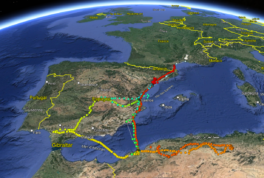 |
LAVZ is one of our first flamingos fitted with a GPS tag. He is now 16 months old, and he has been delighting us with his numerous flights for a year, during which he has travelled 12,500 kms! He had been in Algeria since January 22, but on September 1 he started to travel again, and came back to France to the La Palme lagoon and then to the Salses-Leucate lagoon, 3 days later, flying along the east coast of Spain. He made a brief visit to his native country, crossing the Spanish border again 4 days later and landing in the Ebro Delta.
|
|
|
|
|
| |
Original
Manon and Theotime: much more than just a crush? Manon, our Camargue mother, a female flamingo born in 1998, wearing the ring DBNJ, was observed with her lover at the Pont de Gau ornithological park in the spring with an ideal male flamingo born in 1993 named Theotime, who wears the ring BTPT. Manon and Theotime’s godparents can rest assured: these two love birds are true father and mother hens! |
|
|
|
| |
Our next Sponsors Say
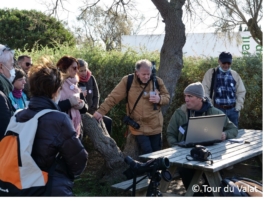 | |
Our next Sponsors Day will take place on November 12, 2022! This day is reserved for all our “My Ideal Flamingo” sponsors.
These sponsors will soon receive detailed information about the day and how to register. The day’s programme will include special guided tours with members of our team to learn all about flamingos, and several other activities to improve your understanding of the species such as an introduction to ring reading and a cabinet of curiosities.
|
|
|
|
|
| |
Gimme another Gazette!
This Gazette has come to an end, but if you want to know more, you can read all our previous Gazettes!
And if you have any ideas for the next one or any comments, please contact us below!
|
|
|
|
|
|

